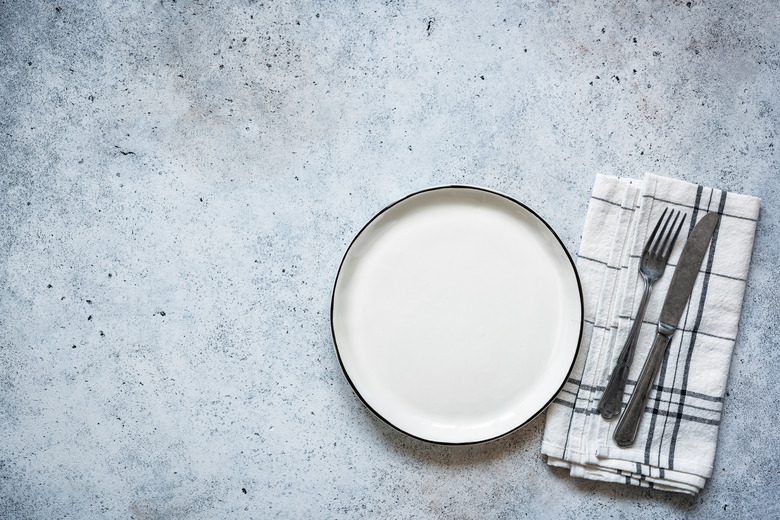What Causes Gray Marks On White Porcelain Dishes?
Nothing ruins the appeal of a home-cooked meal like a dirty dish. But some dishes appear to be dirty when they're really not. Gray marks on white dishes often develop on dinnerware that's used frequently for serving meals. These marks aren't actually dirt or debris; they're simply signs of normal wear and tear on the dishes.
Making Grey Marks on White Dishes
Making Grey Marks on White Dishes
The marks left behind on your dinnerware are often a light, silvery gray, but they may also be more like black. The gray tinged marks give a hint about what put them there — silverware. It can happen any time metal rubs against the white porcelain surface.
The simple act of cutting your food or even rubbing the plate with a spoon or fork leaves a metal deposit on the plate. If you whisk an egg in a bowl with a wire whisk, you might see the scuff marks.
The metal deposit is thin enough not to harm the utensil, though it does sully plate appearance. This type of damage to your dinnerware is reversible, however, and doesn't mean that the dishes are ruined for life.
Eliminating Gray Marks
Eliminating Gray Marks
Getting rid of those marks is straightforward. Mildly abrasive cleaning products formulated for dishes are available commercially and are often labeled specifically for mark removal. Barkeeper's Friend is a popular powdered cleaner used for this purpose. Sprinkle it onto a wet dish, scrub it with a moistened dish scrubber and rinse well.
These products are helpful but not necessary, as you can create your own mark-eliminating cleaner at home using equal parts of baking soda and water. Combine these ingredients to make a paste. Apply the paste to your dishes using a sponge.
Gently scrub away the metal deposits. Add a few drops of dish detergent for extra cleaning power if needed. Rinse dishes clean afterward. A dab of silver polish applied with a cloth is another effective treatment.
Preventing These Marks
Preventing These Marks
You can't do much about the gray marks left behind by cutlery during normal use. But you may be able to prevent some gray mark by properly loading your dishwasher or being careful with dishes in the sink.
Cutlery in the dishwasher may get jostled around and bump into nearby dinnerware, leaving behind those characteristic gray marks. This also occurs in sink washing when plates bump around in the same basin as cutlery. Avoid this problem by keeping dishes well away from cutlery when loading the dishwasher and by washing dishes and silverware separately in the sink. If you have a stainless steel drying rack for dishes, be careful with tines on the rack that might scratch the plates.
Scratches and Other Damage
Scratches and Other Damage
Gray or black marks on dishes from the dishwasher or silverware aren't classified as scratches, as they rarely leave an indentation on the surface of the dish. A true scratch leaves an indentation in the dish's surface that you can feel with your finger.
Some scratches are actually chips in progress, a hairline fracture that develops into a true chip over time. Dishes exposed to very high temperatures may also become rough or visibly distorted on their surface. Unlike utensil marks, scratches on dinner plates and other dishes are often irreparable and could mean the dish needs to be replaced.
